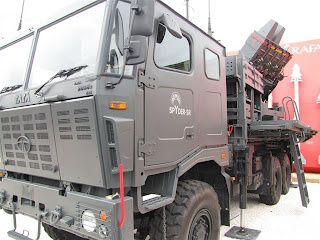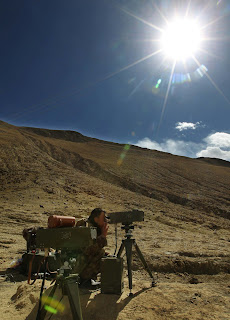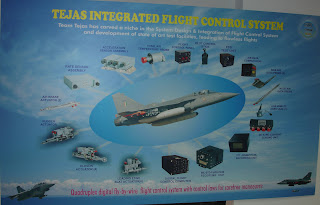After a gap of 29 years, the cat has at long last leaped out of the bag and with it, a can of worms has been opened by no less a person than the present Chief of the Army Staff (COAS) of the Indian Army, Gen V K Singh. His latest televised revelations (see: http://www.youtube.com/watch?v=kxx3GtGTaPY&feature=player_embedded) finally answers the question that I have been raising since 2005: why should the Indian Army be equipped with left-hand drive heavy-duty vehicles of imported origin if they are after all being licence-built by the state-owned Bharat Earth Movers Ltd (BEML) under a transfer-of-technology (ToT) contract inked way back in the early 1980s? There are presently some 7,000 such left-hand drive vehicles in service with the Indian Army, and less than 1,000 with the Indian Air Force (IAF) that have been shamelessly been paraded during almost every Republic Day parade since the mid-1980s. But what has caused the latest furore is this: despite intense lobbying by BEML through the Ministry of Defence’s (MoD) Dept of Defence Production & Supplies (DPS), the MoD and its Defence Research & Development Organisation (DRDO) in 2005 chose TATA Motors above BEML for supplying the transporter-erector-launcher (TEL) vehicles for those Akash Mk1 E-SHORADS already ordered by the IAF, while two years ago both Army HQ and IAF HQ jointly selected the TATA Motors-built 6 x 6 heavy-duty truck as the TEL for the SpyDer-SR SHORADS Batteries on order from Israel’s RAFAEL Advanced Defence Systems Ltd. The total number of vehicles to be supplied by TATA numbers more than 2,000 if one also includes the support vehicles for housing field repair workshops. Obviously highly miffed by such decisions—especially since this has for the first time set a precedent under which DPSUs like BEML’s traditional monopoly as a supplier of such vehicles for India’s armed forces was cast aside and which could also have a domino effect in future—the Czech Republic-based original equipment manufacturer (OEM) TATRA AS, allegedly through its UK-based marketing arm VECTRA Group, decided to explore every means of regaining its monopoly status when it comes to supplying heavy-duty trucks, and the result, as we all know now, is the alleged offer by a retired Lt Gen to bribe Gen V K Singh.
However, as expected, India’s hyperventilating broadcast news media seems to have missed the woods for the trees. For instance, the entire focus has been on this retired Lt Gen, despite the obvious fact that it is simply beyond the means of this retired Lt Gen to offer the Rs13 crore (US$2.5 million) bribe out of his own pockets. Obviously therefore, this retired Lt Gen was allegedly acting as a messenger on behalf of his principal, which can only be either the UK-based VECTRA Group, or an offshore front company affiliated to the VECTRA Group. This then leads us to ask the following questions, which I had first raised some two weeks ago:
1) How does one explain the UK-based VECTRA Group’s dealings in India with TATRA AS of the Czech Republic, when it is BEML that is the sole distributor of TATRA vehicles in India? (See: http://www.vectragroup.com/contact.asp)
2) Does it mean that BEML and the VECTRA Group have a financial understanding under which VECTRA collects royalty payments from BEML for every unit of TATRA vehicles sold in India, and then shares such payments with certain Indian citizens or NRIs possessing offshore savings accounts?
3) How come the VECTRA Group’s helicopter charter service is the ONLY one that has been granted permission to operate out of Greater NOIDA?
4) Isn’t it true that this helicopter charter service is also the unofficial agent/promoter in India of the Eurocopter AS.550C3 LOH/LUH?
4) Is there any connection between an Indian by the name of Ravinder Rishi (see: http://www.vectragroup.com/newsletter-jan12/Message-From-The-Chairman.html) and the MoD-owned Hindustan Aeronautics Ltd (HAL)?
5) Is it true that the VECTRA Group had hired two retired senior service officers about four years ago for actively lobbying for the AS.550C3s?
Remember the big splash made in April 2007 when the MoD reportedly leaked news about the Eurocopter-built AS.350C3 Fennec winning the competitive bid for supplying new-generation single-engined light observation-cum-utility helicopters for the Army and the IAF? Well, the news is that this result was already known seven years ago, when HAL and Franco-German Eurocopter SA had inked a Global Industrial Cooperation Partnership Agreement in February 2005 to jointly produce Ecureuil and Fennec helicopters for the world market. Yet, Eurocopter’s rival, Bell Helicopters Textron, prudently decided to give the MoD the benefit of the doubt and took part in the in-country flight evaluations of its Bell 407 ‘Shen’ variant throughout 2006. But it got the shock of its life when in May 2007 the MoD invited Eurocopter for final contractual negotiations. And this happened even after the Fennec convincingly failed to perform as advertised during the ‘cold soak’ tests in January 2007 at the IAF’s Leh air base during which both competing helicopters’ engines had to be switched off overnight and re-started at high-altitude the following day. Apparently, the Bell 407 had no problem activating its engine with the help of the internally-mounted battery-operated starter-generator. But the AS.550B3 Fennec could not follow suit and it had to remain grounded for 48 hours, awaiting the arrival of an external ground power unit (GPU) from Greater NOIDA. Consequently, fed up with the charade of flight-tests, Bell Helicopters decided for good measure not to take part in the subsequent round of competitive flight trials. Reportedly, Bell Helicopters now believes that HAL and Eurocopter are now hand-in-league to divide the MoD’s now inflated order for LOH/LUH helicopters (for all three armed services)—have the cake and eat it as well. Nothing else can explain how HAL could have stated in 2009 that it will require a ridiculous timeframe of six years to develop a single-engined 3-tonne variant of the twin-engined 5.5-tonne Dhruv ALH! Could it therefore be that Gen V K Singh is determined to clear this mess as well and is it a consequence of all this that the OEM for supplying the LOH/LUHs has not yet been selected? It does seem so, at least to me.
Which now brings us to another reveleation made by Gen V K Singh about the Army’s field artillery rationalisation programme (FARP). But before that, it will be worth reproducing the MoD’s statement in Parliament on March 19, 2012: The Govt of India had secured the right of ToT during the purchase of Bofors FH-77B 155mm/39-cal field artillery howitzers. Though all the technological documents as per the ToT contract were received by the MoD-owned Ordnance Factories Board (OFB) from Bofors AB, the ToT was not carried forward as the dealings with the technology provider, (Bofors AB) were suspended. Further, no indent was placed by the Army on OFB for manufacture and supply of complete FG-77Bs. Capital expenditure of Rs376.55 crore (US$75 million) was sanctioned by the Govt of India in March, 2012 for creation/augmentation of Large Calibre Weapon manufacturing capacity in Ordnance Factories. Earlier on November 28 last year, this is what Defence Minister A K Antony had said at the Lok Sabha: The OFB has been manufacturing the major components of the FH-77B, such as the barrel, breach mechanism, muzzle-break, loading trough, recoil system along with the elevating and traversing cylinders, and supplying all these to the Army as spares.
It would therefore seem that the all-important gun-trails and gun-carriages of the towed FH-77B have yet to be indigenised, and all related work to this effect has at last been initiated by the OFB’s Jabalpur-based Gun Carriage Factory (GCF). It now remains to be seen if the GCF can master the metallurgical processes required for series-producing the gun-trails and gun-carriages. Meanwhile, one experimental FH-77B incorporating all OFB-built components, along with Bharat Electronics Ltd-supplied mizzle velocity radar, fire-control computer and its AMLCD-based terminal, VHF radio, fibre-optic gyro-based land navigation system (serived from the one developed by HAL for the Arjun Mk1 MBT), direct aiming sight, and interfaces with the DRDO-developed and BEL-built ‘Shatki’ ACCCS artillery fire-direction system, is presently undergoing firing trials at the DRDO’s Balasore-based Proof & Experimental Estsblishment (PXE). The OFB has been ordered by the MoD to offer two complete GCF-built FH-77Bs for field trials that are due to take place in March 2013 and last until the end of the same year. If successful, then an order for 400 of these GCF-built FH-77Bs will be placed and executed between 2014 and 2019.
In a related development, in response to a global RFP issued in August 2008 by Army HQ for upgradation of an initial 100 of the existing 360 155mm/39-calibre FH-77Bs, the GCF has proposed a modification package under which a new-design 155mm/45-cal barrel (which was originally developed for the OFB’s in-house upgraded M-46 Metamorphosis variant) , breach mechanism, muzzle-break, loading trough, recoil system, and elevating and traversing cylinders will be developed and offered for series-production. The competing proposal has come from the $21.25 million joint venture between Mahindra & Mahindra Ltd and BAE Systems (which was created in December 2009 as a land systems-focussed, joint venture defence company, based in Faridabad, with the company’s equity split being 74% Mahindra and 26% BAE Systems), which has proposed its FH-77B05L52 package that includes BEL-built components, along with a ToT offer that will enable GCF to receive via ToT all drawings and production-engineering data required for locally producing the 155mm/52-cal barrel, breach mechanism, muzzle-break, loading trough, recoil system along with the elevating and traversing cylinders, with the redesigned gun-trails and gun-carriages being built by the Mahindra-BAE Systems JV at Faridabad and being supplied to GCF for final assembly and systems integration. India’s Minister of State for Defence M M Pallam Raju confirmed on March 1, 2012 that the Indian Army has already placed orders for an initial 100 modified FH-77B05L52s with OFB. Further updates and announcements in this issue are expected to emerge during the DEFEXPO 2012 expo.
Which brings me to the most interesting question: will Army HQ next issue an RFP calling for the development of a motorised version of the GCF-built 155mm/39-cal FH-77B, for which OFB already has a risk-sharing joint-venture agreement with TATA Motors? It would make perfect sense if such an RFP were to be issued in the near future, since the Army’s requirement for such motorised howitzers (in 39-cal configuration) is for 800+ units, while those for a motorised 52-cal configuration exceed 1,800 units.—Prasun K. Sengupta











































+&+Python-5+AAMs.jpg)
